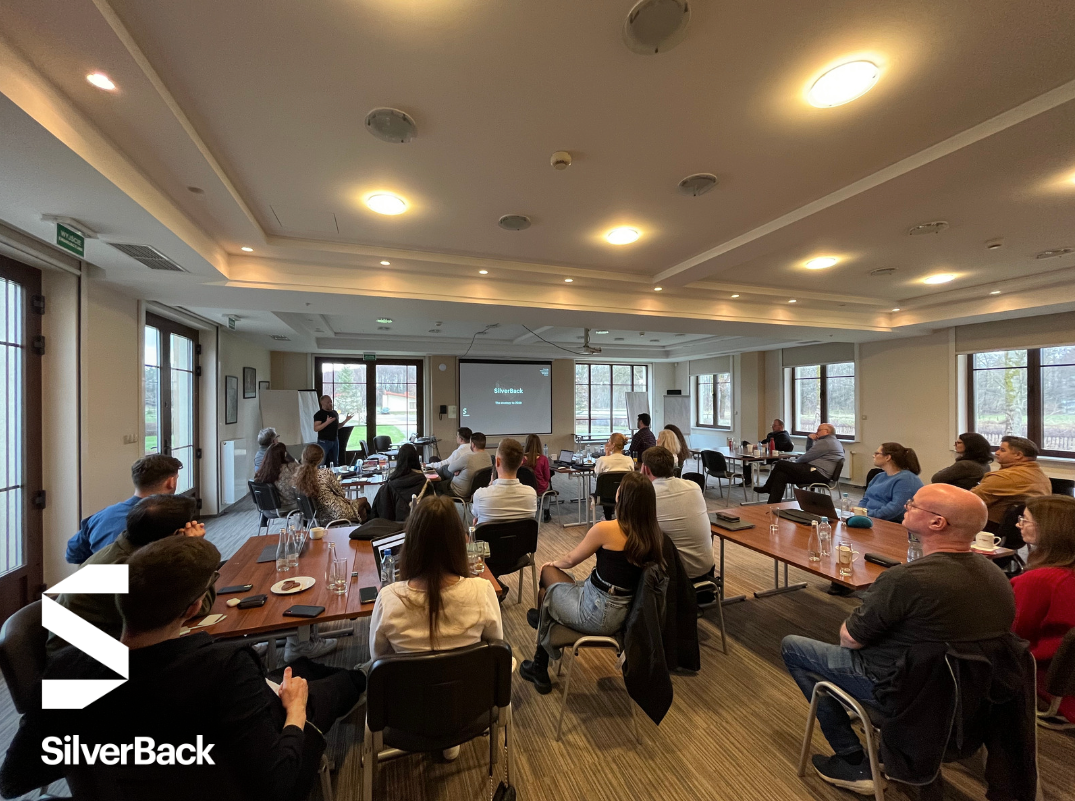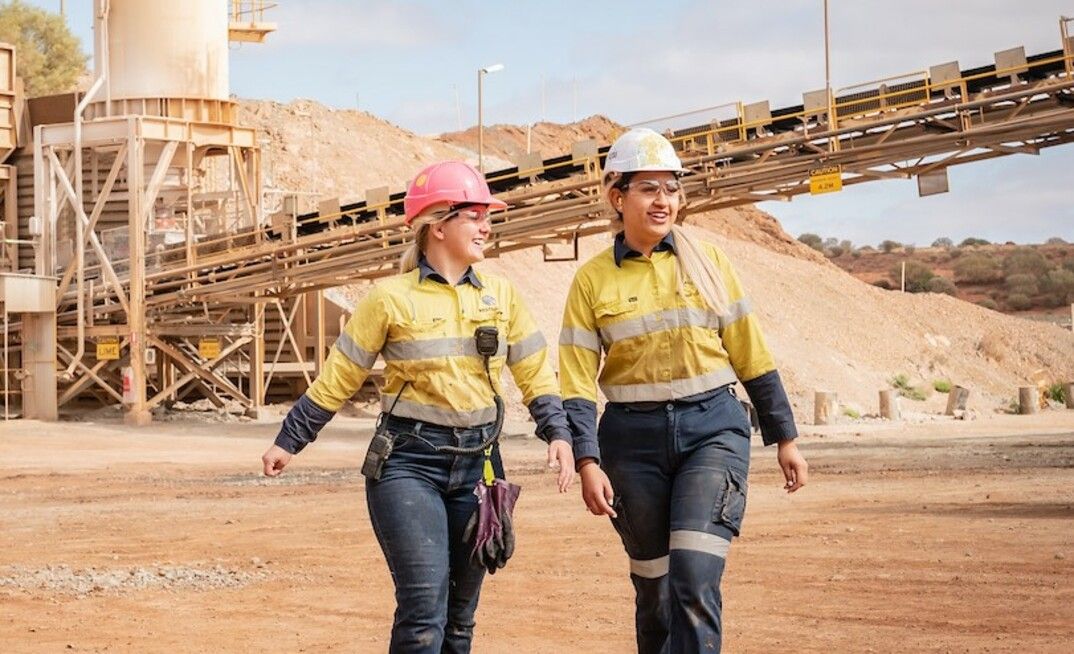Insights
What is going on in the industry? What are the latest trends? What are we doing?

In SilverBack we often talk about lived values demonstrated by leaders and employees alike. In particular, we want to be empathetic – understanding one another and mindful of staff’s needs and vulnerabilities away from home. So, we are thrilled to be sponsoring the Hillerød Wolfe Tones and congratulate them on their recent win in the 2023 Intermediate Gaelic Football Championships, their second trophy won over the last 12 months!

Our SilverBack colleagues in Lublin have been celebrating National Independence Day but there’s more than fireworks flying in Poland these days. Even during recent dark days. October was a grim month as the Israel-Gaza conflict joined Europe’s own war, Ukraine, in the horror headlines and financial markets balked. For the third consecutive month global stock markets experienced losses, but with one exception. Poland. The country’s twenty biggest publicly quoted companies in Warsaw’s WIG20 Index bucked the trend and clocked up a stunning 13% gain in just one month. Of course, the market commentariat were quick to identify the trigger for sudden optimism in Warsaw.

As we conclude SilverBack’s 11 th end-of-year get together, it is important to reflect on the journey thus far. Not many years ago there were only four people at our annual year-end events. This time, we hit the 40 mark and that growth in personnel gives us great pride. Our gathering was in the beautiful city of Warsaw, Poland, where we were joined by colleagues from Ireland, Sweden, France, Romania, Italy, Spain, the UK and our local Lublin office.

Germany can confuse. Consider its meticulous economic planning and then shudder at its disastrous pre-Ukraine war energy strategy. Similarly, a reputation for strict regulation jars with a history of accident-prone banks and recent memories of a breath-taking Wirecard fraud. Even today, financial commentators are scratching their heads at headline economic stagnation (measured by GDP) contrasting sharply with all-time-high levels for the nation’s key stock market index, the Dax. In fact, investor enthusiasm could almost be described as giddy. Check out a 4% gain for the Dax in the past week and a Europe-leading 12% increase year-to-date, and that adds up to a better-than-tech sector performance. And yet, the combined value of Germany’s top 40 Dax constituent companies is less than the market capitalisation of just one AI and cloud computing superstar stock, Nvidia. It really is remarkable that one company’s future in the cloud(AI) could be worth more than the destiny of all of Germany’s biggest companies. However, the cloud is going to be a very big part of Germany’s future too…. May is the month of the Data Centre World conference in Frankfurt and the choice of venue is highly appropriate. Frankfurt is the 6 th biggest data centre market in the world and therefore is a critical part of Europe’s cloud/AI infrastructure story. Indeed, we have previously written about how the rapid acceleration of data centre construction should be viewed as the best indicator of the size of investment piling into AI and the cloud computing required to power this technology: “….the bigger story according to Schroders’ analysts was “hiding in plain sight ”. Nvidia in their call with Wall Street’s analysts explained the uplift to their projections by mentioning ‘data centres’ no less than 56 times. Clearly, the destination for these advanced GPU chips needed to be premium performance, secure and stable data centre environments. The cloud and data centres have become interchangeable proxies for the same growth story, AI.” If anything, this growth story has accelerated even further. Morgan Stanley research is forecasting cloud infrastructure spending (capital expenditure) to grow by 44% in 2024 compared to a sluggish 2% last year. Goldman Sachs analysts have taken guidance from the recent quarterly results calls of Amazon, Meta, Google and Microsoft and projected capital expenditure from these four alone of almost $200 billion by 2025. The investment numbers are staggering and, for the major cloud infrastructure centres like Frankfurt, the headlines announcing new spend are coming thick and fast. Check out the following in just the past few weeks: Real estate firm Tishman moves into data centres, plans Frankfurt campus – Data Centre Dynamics Digital Realty investment fund expands stake in Frankfurt data centre – Techerati Clearly, the Frankfurt Data Centre World event will be busy. However, in reaching for the cloud, Germany and other fast-growing infrastructure centres will be increasingly mindful of other risk ‘clouds’ on the horizon. The sheer speed of data centre construction runs the risk of outpacing the other critical infrastructure required for cloud computing on a massive scale. Think of the electricity grid pressures to power the data centres and a recent International Energy Agency report suggesting data centre electricity usage is set to double by 2026. Then consider a recent Financial Times article highlighting the same imminent doubling of electricity power demands and the stunning data point of Microsoft “opening a new data centre globally every three days”. Earlier this month Bob Blue, chief executive of Dominion Energy, one of America’s biggest utilities, said that data-centre developers now frequently ask him for “several gigawatts” of power compared to Dominion’s total installed power base of 34 gigawatts (GW). Strains on global power grids are now a fact of life but there might be an even more basic power being overlooked. Skilled labour. A recent conversation with a City-based analyst highlighted the plight of the mining sector and the average worker age profile approaching 65 (!). However, it’s not just old economy sectors facing skills crises. A 2023 report from IT consultant, Onnec, stated that 94% of operators experienced a shortage of experienced data centre construction teams. In February Germany’s own Economy Minister, Robert Habeck, flagged 700,000 unfilled vacancies and official estimates of the country losing 7 million skilled workers by 2035. The double-whammy of a power and manpower crunch coming down the tracks is a real challenge which could derail the cloud opportunity. However, there is one encouraging development. Money is not the solution to all problems but it certainly helps. Clearly, a huge amount of investment capital chasing dreams in the AI cloud will look at the risks and see a need for additional investment in new power grid infrastructure and skills training. However, big tech companies investing on their own can’t carry the entire investment burden. So, what is needed is probably government spend but also another big pool of private money. And there’s some good news. The reports this week of private equity (PE) giant, Apollo Global, potentially co-investing $11 billion to help build a semiconductor chip factory in Ireland is the latest example of private equity getting involved in cloud infrastructure, in a big way. Also, another PE monster, Blackstone, has just announced the purchase of the abandoned Britishvolt gigafactory as the planned site for a $10 billion data centre campus. The entry of private equity and trillions of investment dollars into the data centre sector is hugely significant. Furthermore, the size of this private investment pool opens up the possibility of addressing the challenges of grid pressures and skills shortages. Or, as the financial markets commentariat might say… “money finds a way.” Germany hopefully will too.

As the Indian subcontinent bakes in stifling 50 degree heat, there’s a financial market heating up too. And it might just help save us all. Bloomberg is reporting that European borrowers have accessed €1 trillion of debt capital in 2024 at a faster pace than any other year in history. This flurry of bond (debt) issuance has been driven by expectations of lower interest rates by investors but, hidden in this huge number, cleantech has emerged as a star sector. In fact, European cleantech debt investment surged to a record-breaking €16.7 billion in the first quarter, more than twice the debt raised by the sector in all of 2023. That data comes from Cleantech for Europe in their latest report and is nicely timed given the European Council has just adopted the Net-Zero Industry Act (NZIA). The Act, which comes into force in June, will simplify the permit-granting process for strategic projects, facilitate market access for strategic technology products including via public procurement or auctions for renewables and enhance Europe’s clean energy workforce. It’s more than just words. There are targets to give NZIA teeth; the ultimate aim is to have a clean energy manufacturing industry, including solar, wind turbines, batteries and heat pumps that can meet 40% of the EU’s deployment needs, and 15% of global demand by 2040. More importantly, EU money is backing this aim. We have written previously on this significant financing shift and note that 8 out of the top 10 cleantech debt deals in Europe were partially financed by a public bank, six from the EIB alone. The data from the Cleantech for Europe report reveals the EU finally getting serious about financing the scale-up of cleantech manufacturing, including first-of-a-kind (FOAK) plants. Indeed, the significance of public money backing has been recognised by a leader of one of the biggest deals, Henrik Henriksson CEO of H2 Green Steel: “Developing a first-of-its-kind project requires all types of cleantech financing mechanisms and they need to interact. In H2 Green Steel’s case, this meant securing €4.2 billion in project finance, €2.1 billion in equity and a €250 million grant from the EU Innovation Fund for the world’s first large-scale green steel plant in Northern Sweden.” A critical part of this “interaction” is the de-risking of investments with the participation of public lending institutions. The other key point is confidence. Lending activity in Q1 was a whopping six times greater than historical averages and that breeds confidence in even riskier parts of the investment world. Not every cleantech project is as big as Northvolt, Sunfire or H2 Green Steel. The little guys in the cleantech ecosystem need support too. Venture Capital (VC) investment funding activity of €2.8 billion was a 55% increase on Q1 2023. A few other data points from the Cleantech for Europe report are also worth highlighting: Cleantech VC deals took place in 17 out of 27 EU countries The average VC deal size increased by 15% Deal volume in late-stage investments grew by 31% Perhaps the most encouraging development in a geopolitical race for cleantech independence was that Europe is closing the gap on a headline-grabbing US “Bidenomics” ramp-up in the sector. Europe’s less-developed VC investment pool achieved funding levels of 71% of North American investment totals in Q1 – the narrowest margin ever. The good news is that this gap can close even further if increased confidence and lending (bond) activity can attract more capital into the VC investment pool. US pension funds, university endowments and insurers are huge providers of venture and growth capital. Their European counterparts not so much. In fact just 0.01% of these multi-trillion euro assets are allocated to venture funding (Source: State of European Tech). At some point you’d hope these stewards of our savings and wealth will work out that a dead planet doesn’t really need a discounted cash flow model, or asset-liability matching risk frameworks. The risk is very NOW but thankfully the headlines continue to encourage: French gigafactory startup Verkor secures €1.3 billion loan – Financial Times Inside Microsoft’s record-breaking carbon removal contract – GreenBiz US, Europe battery factory spend triples – S&P Global Research Lots of cleantech headlines to come. Lots of investment capital needed too. Clearly, the bond market is rapidly waking up to the cleantech revolution. So, let’s hope further institutional support follows the Net-Zero Industry Act and “interacts” with our threatened world.

November 17 is a date which history will forever link to revolution. In the last century it was a month and year marking the end of the Russian Tsars, the beginning of authoritarian Communism in power, and its aggressive multi-decade global clash with Capitalism. History will record that the planet and both sides survived a Cold War nuclear stand-off, but that one economic model did not. Fast forward to today, and this century has a new “November 17” moment with stakes equally high. Possibly higher.

September felt like the wrong kind of time travelling. Only backwards. For those of a certain age, the bankruptcy of Tupperware the food storage icon, the lethal mass-destruction of Hezbollah’s paging devices in Lebanon and a US President escaping two assassination attempts for the first time since the 1970’s were flashbacks to very troubled Cold War decades, political volatility and inflationary times. Hmmm…on second thoughts…..maybe not much has changed. And yet, the professional analysts of those challenging times never saw the imminent collapse of the Soviet Union, a mobile digital revolution and forty years of lower interest rates coming. Lesson learned on pessimism hiding progress? Let’s fast forward to today. Perhaps, the bigger existential threat (vs nuclear war) for our planet is climate change and an urgent battle to electrify and decarbonise the global economy. But, the headlines on that battle have darkened too, and not just with catastrophic flooding in Europe and similar destruction in the US post-Hurricane Helene. The decarbonising poster child of the global economy has been the automobile transition away from internal combustion engines (ICE) to battery-powered electric vehicles(EVs). Transition progress up to last year had confounded the commentariat, as sales penetration rates for EVs kept beating forecasts and rocketed from 2% of total sales in 2018 to 18% just 5 years later. Research data from Bloomberg forecast a 33% rate of penetration by 2027 but the media have switched tone. Now, the wording is all about slowing, cooling, delaying, abandoning or even failing. Check out these headlines of recent months: Europe Battery Factory Plans Are In A Shambles – Cleantechnica Ford Shrinks Its EV Rollout Plans As Demand Lags – Wall Street Journal EV Slowdown Steers World Further Off Course From Net Zero – Bloomberg Toyota Cuts 2026 Global EV Output By A Third – Reuters Tesla Sales Fall For second Straight Quarter – The Guardian BMW Cancels $2 billion battery cells contract with Northvolt – Reuters The final headline was a precursor to much bigger headlines for Northvolt in recent weeks. Having raised $15 billion of financing, Sweden’s Northvolt is possibly Europe’s highest profile project with a mission to be an all-in-one shop offering everything from material production and battery making to end-of-life recycling. Those full-cycle ambitions are now ‘on hold’ as the company seeks to put the enterprise on a more secure financial footing. The Guardian summarised the remedial actions as follows: “The Swedish batterymaker Northvolt is to cut 1,600 jobs, in response to “headwinds” blowing through the electric car industry. The battery company announced redundancies across three of its sites on Monday, including 1,000 in Skellefteå, in northern Sweden, where it is suspending the expansion of Northvolt Ett, Europe’s first homegrown battery gigafactory. The company, which has been seen as Europe’s most promising contender to China’s producers, will also cut 400 jobs in Västerås, in central Sweden, where Northvolt Labs is based, and 200 in Stockholm, home to its head office. Peter Carlsson, the company’s chief executive and co-founder, insisted that “overall momentum for electrification remains strong” but that “tough” decisions were needed to ensure the company’s future” There is no sugar-coating that messaging. However, we should remind ourselves that EV battery manufacture has huge technological hurdles and is subject to customer demand and supply chain risk, while trying to keep pace with phenomenal adoption growth rates and a global supply chain land grab. In a more mature sector, battery production would be a classical cyclical manufacturing activity. Now, consider the pace of technology change and the global shift in consumer behaviours. Anyone reminded of the semiconductor chip manufacturing sector? Think back to the 2000s and the huge highly risky investment in fab factories required while the global economy hurtled into the digital age. For years the financial market orthodoxy was that semiconductor chip sector stocks like AMD, Intel, Micron, Samsung, TSMC, ASML, Broadcom or Nvidia should NEVER be owned by investors, only traded. Tell that today to Jensen Huang and his colleagues at the 3 trillion dollar Nvidia chip superstar which is now described as more important to the world economy than the US Federal Reserve. Hyperbole certainly, but this elevation illustrates the emotional rollercoaster the media try to create for an audience gasping at yet another manufacturing rockstar following in Apple’s and Tesla’s footsteps. So too should we be conscious of emotions, and media neediness in the coverage of EV’s cyclical misses and growth bumps. Those nascent bumps and bruises should always be considered in the context of a structural super-cycle for EVs and batteries with a 2050 Net Zero end-game. More specifically, readers should think about how numbers and percentages can tell a story, or not. Also, we should know that the ICE to EV transition is two stories, not one. Try these numbers for size and perspective…. *EV sales are still growing, just not at year-on-year doubling rates (20% vs 100%). *Slowing growth rates on much larger sales bases are still very big numbers. 12 million zero emission vehicles likely to be sold globally in 2024. *The media headlines will say Norway’s EV sales only grew 5% in August. But, you probably won’t read that EVs had 94% market share in Norway last month! *Electric cars and trucks make up 60% of all new vehicle sales in China. *BMW has just passed out Tesla on EV sales in Europe. Tesla sales in Europe are actually off 16% but you probably won’t read that on Twitter/X….as chaotic leadership starts to hurt brand. *Now the story that nobody reads. Global fossil-fuel ICE vehicle sales are DOWN by 25% since 2017, and the global ICE vehicle fleet is set to peak in 2025. *Oh, and 97% of Chinese consumers say their next vehicle will be all-electric. The cyclical aspect of manufacturing is often missed when there is a massive structural shift happening across decades. Every time one reads a new sales or growth figure for EVs, one should be checking the ICE figure too. The shift is massive and happening at a rapid pace. However, bear in mind the semiconductor industry analogy. Customers can disappoint, technologies and innovations can go wrong, manufacturing infrastructure can be delayed and interest rates/money can get tight. That’s the manufacturing business which Northvolt is seeking to revolutionise. But buckle up, EVs are the future and are still our planet’s best bet to ensure time for travel…

There is a well-worn phrase in financial market circles that “the trend is your friend”. Clearly, those following and investing in Artificial Intelligence (AI) trends in recent years will be nodding furiously in agreement with that mantra. In fact, there are probably ten trillion reasons why they love trends. More specifically, three companies perceived to be the biggest winners in AI – Apple, Nvidia and Microsoft – are now valued at a combined 10 trillion US dollars . However, financial trends can end. Often it will be an exhaustion of investment capital or over-investment which will kill a trend. But, maybe not this time. We have previously written about the avalanche of investment capital pouring into the construction of data centres and the decarbonised industries of tomorrow. In parallel with these technology revolutions in cloud (AI) and climate (cleantech), there is a growing awareness of the massive spend required to keep up with electricity demand. As an illustration of the electricity grid pressures, US data centre power usage currently accounts for 22GW, or 4.5% of the nation’s power consumption. However, according to SemiAnalysis research, that figure is projected to reach 100GW, or nearly 20% of nationwide consumption by 2030 due to AI build-out. Consultants, McKinsey, reckon the shift away from fossil fuels will require infrastructure investment of $9 trillion every year until 2050. That’s a great construction trend story but there’s a worrying basic materials story which could impact all trends; a shortage of base metals. For example, copper is critical to electrification and the storage of power/batteries. Consider these three numbers: S&P Global see global copper demand doubling from current 25 million tons per year to 50 million tons by 2035. For historical context, 700 million tons of copper has been produced over the course of human history. Net-Zero targets for 2050 demands that humanity produces two times more than it has ever produced, or 1.4 billion tons. There have been ZERO major new copper discoveries since 2014. You get the trend. But, do the global mining industry and the giddy AI tech investment community ? Due to chronic underinvestment, planning delays, investment capital scarcity, genuine sustainability concerns, higher interest rates and AI tech excitement the global mining sector is currently projected to increase production by just….. 20% over the next 10 years. Indeed, the introduction of the EU’s Critical Raw Materials Act into law in 2024 is a reflection of a growing supra-national anxiety. The Act is an attempt to guarantee a supply for EU nations of 17 ‘strategic materials’ including copper for its green and digital transitions. Hopefully, investment capital will be diverted to the sustainable securing of new sources of critical materials but there’s a skills challenge too. Check out these snippets from the mining industry: More than half the mining workforce in the US (about 221,000 workers) is expected to retire by 2029. A McKinsey survey found 71% of mining executives are finding a talent shortage is holding them back from delivering on production targets. In the US there has been a 39% decline in mining graduations since 2016. In Australia, mining engineering enrolment has fallen by 63% since 2014 . The investment capital and skills challenges are not easy fixes for the mining industry. However, it seems inevitable that investment will be drawn to a neglected sector which is critical to the decarbonisation and digital transition of the global economy. For context, the $10 trillion number cited for just 3 companies dependent on electrical power stands in stark contrast to a valuation for the entire global mining sector of around $2 trillion. The continuing divergence of these two sectoral trends is manifestly not sustainable but we have spotted a few encouraging developments in the broader construction arena: Labour mobility: A recent Bloomberg article on the success of the state of Texas attracting major data centre equipment manufacturers l ike Siemens, Schneider and Eaton. The key driver in these project decisions was the healthy 1 million-strong manufacturing workforce benefitting from a trend of people moving to southern states. Lesson 1: People and skills will move in a modern economy. Labour trends: Gen Z employees are increasingly focused on purpose or ‘ikigai’ in their working lives. Well, the decarbonisation of the world seems like a decent start. So, it was intriguing to see a Wall Street Journal article this month headline an article on careers with “ Gen Z Plumbers and Construction Workers Are Making #BlueCollar Cool”. The emergence of TikTok and Instagram influencers in traditional trade work is attracting renewed interest from young Americans in the construction sector. Lesson 2: Labour fashions can change. Labour education: Microsoft might boast a $3 trillion valuation as a company but it also understands the value of access to skills necessary for its business growth. Check out Microsoft’s recent announcement investing €2.9 billion in Sweden over two years in cloud and AI infrastructure. Alongside the investment headlines, was an initiative to train 250,000 people in AI skills. Lesson 3: Labour learning grows wealth. So, the above examples illustrate how companies, talent and capital are adjusting to massive growth in the construction of tomorrow’s infrastructure. Hopefully, these lessons will be urgently applied to the reversal of worrying mining trends. It should be clear by now that the futures of mining, construction, infrastructure and new technologies are inextricably linked. More bluntly, and using extremely basic maths, $10 trillion into $2 trillion just doesn’t go.

Oh dear. A couple of good Cop 28 headlines on the agreed funding of climate loss and damages for developing nations were followed by a howler from COP 28 President and host, Sultan Al Jaber. His poorly chosen words – to suggest there is “no science” indicating a need to phase out fossil fuels in meeting 1.5 degree global warming targets – was a leadership loss. However, global business is doing a much better job at leading a planet survival mission on decarbonisation. The umbrella term for this mission is sustainability and many businesses now ‘get it’. We recently attended a Cleantech Briefing for Senior Leaders at the Irish Management Institute in Dublin and were struck by a couple of key messages:

